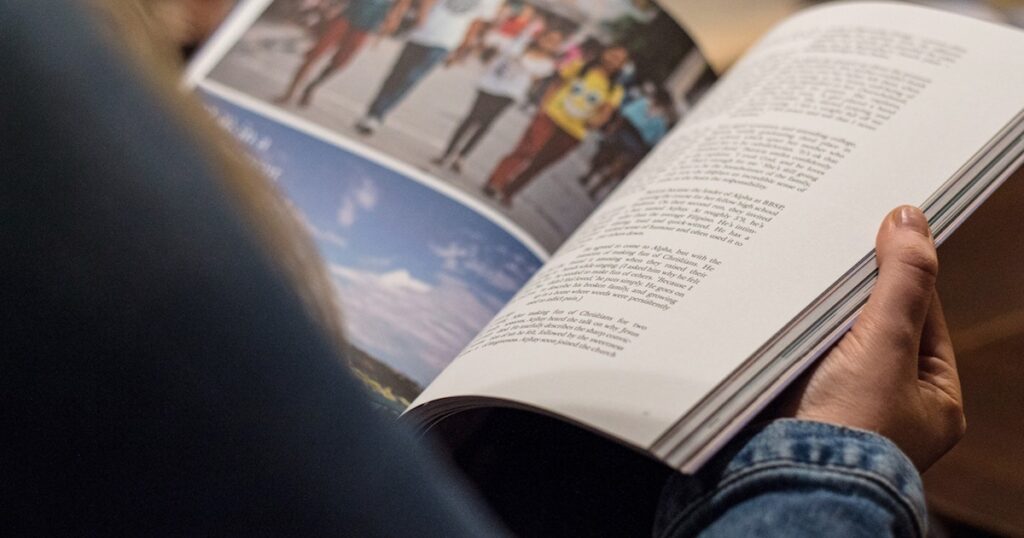
6 Jobs You Can Do With a Bachelor's Degree in Graphic Design
Although most work in an office setting, in 2018, 22 [...]
Whether you’re an artist, writer, editor, designer, musician, photographer, social media maven, or content creator, creative positions can come a satisfying sense of self-worth—or, on the flipside—major insecurity. Most often, creatives are somewhere in the middle: talented, driven, but simply unable to land an opportunity…much less the opportunity. The isolation of many freelance creative gigs doesn’t help, either.
Fortunately, networking for creative professionals doesn’t have to be a chore. It can be fun and fruitful (and—a warning—sometimes humbling, too). Follow these tips to amp up your creative confidence and prepare for advantageous connections and collaborations that could catalyze your career.
Networking as a creative provides the opportunity for people to get to know you as an individual, as opposed to just seeing your work and moving on (if they were even exposed to your work at all). Meeting in person improves the chances others will become personally invested in you, your ambition, and your career. Plus, many people and companies want to support local artists or recruit local creatives—and if you’re meeting in person in your town or city, there’s a good chance you’re just the kind of local talent they’re seeking.
Meeting in person has other advantages for creatives, as well. It’s different from other forms of networking because your creative pursuit may be a side hustle, or you might be newly embarking on your own. Or, if you’ve been at it for a while, you may have been grinding it out in isolation—so networking provides a chance to actually, y’ know, talk to other people beyond your daily bubble.
Also, unlike more data-driven positions, creative accomplishments can be harder to quantify. No matter how show-stopping your creative work, if it didn’t directly lead to revenue-based or statistical results, it may leave some non-creatives scratching their heads.
By meeting in person and really having a conversation, you have a chance to articulate what you’re genuinely passionate about, whether it’s the process, inspiration, public reception, or kudos you’ve received. This can lend gravitas and clarity to something that on the surface might look fun and easy (like a popup event at a festival) or that more traditional professionals might not be familiar with (like a cutting-edge VR experience).
Sure, you know the value of your capabilities, but others may not—at least, not right away. If you’re in a visual field, having business cards with your work displayed on them or being able to pull up a portfolio on your phone quickly can take your work from abstract concept to reality.
But visual examples aren’t all that’s needed. Have anecdotes up your sleeve as to how your talents make an impact. Connect the dots for them. Instead of just telling someone you’re a writer, mention that this vocation can apply to everything from product descriptions to email blasts. If you’re a visual artist, you can create office art, ads, website graphics, portraits of leadership teams, holiday cards, or swag.
Creative work is so often undervalued (does “ask the intern to do it” or “my kid could make that” ring a bell?), if it’s even included in project budgets at all. Being prepared with tangible examples of how you can concretely contribute could make the difference between casual interest and an executable opportunity you can pounce on.
Creativity crosses industries, so don’t limit yourself to networking events geared exclusively towards creatives in your specific field. For example, a tech summit can be a great chance to tout your tagline talents for newly launched startups; a construction convention can be a chance to pitch your design prowess for brochures and property signage; and a social media meetup can be a chance to connect your copywriting skills to campaigns on the horizon.
By broadening your horizons, you don’t just discover new opportunities that wouldn’t otherwise be on your radar—professionals in other fields discover you, too.
Even if you’re a bona fide visionary, keep diva behavior in check. You’re networking to facilitate connections, not repel them. On top of that, artists and creatives already have a bad rap when it comes to seeming flighty or arrogant; give creatives a good name with a winning demeanor.
Be humble when describing your work, and afford others the same respect for their career paths and passions as they do for yours. It’s not just for the sake of being polite—the more you demonstrate curiosity and consideration for folks in other fields, the more you’ll learn about areas where there might be an opportunity for you, as well.
Yes, networking boosts your chances of scoring a commercial commission or an appealing contract. Bt the truth is… most opportunities from networking (even the ones that sound stupendously promising) won’t lead anywhere. At least not right away.
The good news is that networking isn’t that narrow in its benefits. Forging relationships means you’re in it for the long haul. Don’t bank on immediate slam dunk opportunities. Instead, look towards the future. Once you’ve established a solid connection, there’s all the better possibility that months later, a more solid project could come along (either via your contact or perhaps as a referral from a contact’s contact)—and you’ll be top of mind as it approaches.
Alumni meetups can be an excellent venue for jumpstarting your creative networking, as you have something in common with other participants already, even if you’re years or disciplines apart.
But your school connection doesn’t have to end there. If you’re trying to push yourself into a new direction or want to hone your skills, a certificate class, training course, or even an advanced degree can give you an edge—making you more competitive and in-demand. Don’t forget that your fellow students and faculty members are excellent and topical candidates for networking, too.
Need help figuring out what kinds of classes will fit the bill? Networking is also a terrific place to conduct research. Asking about desirable skills or classes can be an excellent way to relate to a new contact, especially if it’s someone further along than you on a similar track.
When you’re networking, you’re not interacting in a one-sided manner, and you’re not just there to land an opportunity. Some of your most fulfilling networking experiences can be when you’re giving someone else a leg up.
Whether you’re recommending a resource, relating an experience, sharing a link or article, or just inviting someone to another event, pitching in can nurture some genuinely strong bonds. By showing interest and exerting a little bit of effort, you’re demonstrating that you’re not just trying to get something out of the interaction, but you’re interested in developing an authentic and symbiotic professional friendship.
Not only does this open the door to them reciprocating when an opportunity to help you emerges, but it sets up the relationship for longevity. This is especially valuable when you’re in a creative field, as your work is likely to evolve, whether based on techniques, clients, or trends. If you maintain contact through all of your career’s twists and turns, there’s a better chance you’ll catch someone’s eye—a far more significant advantage than someone only seeing your work once and not staying in the loop.
Networking as a creative isn’t just about elevating yourself; a rising tide lifts all ships. Sure, it stings when someone else lands the gig you wanted, but when creativity is valued, it lends legitimacy to the craft as a whole. Plus, when companies see that hiring creatives is a worthwhile and everyday endeavor, it’s likely to have a ripple effect, leading to even more opportunities.
Helping other creatives can directly help you, too. Don’t have the bandwidth for an opportunity that comes your way? Don’t just tell a client “no.” Suggest others in your network whom you trust to deliver. Feel like you can tackle one piece of a project, but that a component will still be lacking? Recommend an expert with whom you can collaborate. Not only will you gain brownie points with the client, but the creatives you refer or bring in will likely recognize your consideration and return the favor. This can lead to more opportunities, higher quality work, and enhanced goodwill for everyone—creatives and non-creatives alike.
Allison Tanenhaus earned her bachelor’s degree in English from Harvard, her copyediting certificate from Emerson, and a smattering of continuing-ed design credits from MassArt. After a decade as a marketing and advertising copywriter, she detoured into an abstract art career, where words don’t matter at all. She stays in the writing loop via freelancing and mentoring—hence this bio you’re reading now.
Questions or feedback? Email editor@noodle.com

Although most work in an office setting, in 2018, 22 [...]

It's no secret that graphic designers have serious skills,but what [...]

After completing a Master's in Social Work and becoming a [...]

To identify the program that will provide you with the [...]

At private or charter schools, earning potential may depend on [...]
Categorized as: Liberal Arts, Art & Design